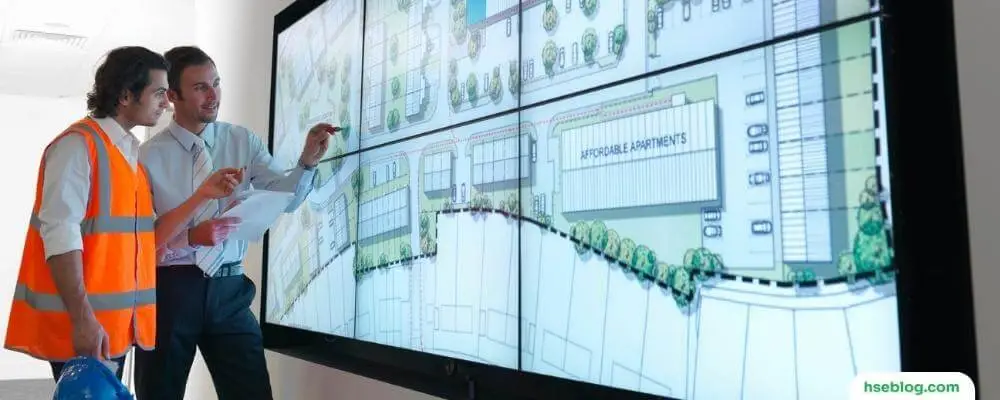Risk controls are essential for creating a safe and healthy workplace. They are designed to protect employees from hazards and minimize the risk of accidents, injuries, and property damage. However, safety controls are not static; they must be reviewed regularly to protect employees effectively and prevent incidents.
In this blog, we will discuss how, why, and when to review risk controls in the workplace. We will cover the areas needing review, the steps involved in reviewing risk controls, and the benefits of regular risk control reviews. Whether you are an employer, safety manager, or employee, this blog will provide valuable insights on keeping your workplace safe and healthy.
How to Review Risk Controls?
Reviewing risk controls is an important component of an organization’s overall risk management process. To conduct an effective review of risk controls, you can follow these steps:
- Establish a review team: Assemble a team of individuals with relevant expertise in risk management, compliance, operations, and other relevant areas. This team should know the organization’s risk landscape, risk management framework, and existing risk controls.
- Develop a review plan: Create a plan outlining the risk control review’s scope, objectives, and timeline. The plan should identify the specific areas to be reviewed, as well as the methods and tools that will be used to assess risk control effectiveness.
- Gather relevant information: Collect documentation, data, and other information on the risk controls under review. This may include policies, procedures, training materials, incident reports, performance metrics, and regulatory requirements.
- Conduct interviews and site visits: Engage with employees and other stakeholders to gather information on the implementation and effectiveness of risk controls. Site visits may also help observe risk controls in action and identify potential gaps or weaknesses.
- Analyze the information: Analyze the collected information to assess the effectiveness of risk controls, identify gaps or weaknesses, and determine whether the controls comply with relevant laws, regulations, and industry standards.
- Benchmark against best practices: Compare the organization’s risk controls to industry best practices or similar risk management practices to identify potential improvement areas.
- Identify improvement opportunities: Based on the analysis and benchmarking, identify opportunities for enhancing the organization’s risk controls. This may include updates to policies or procedures, additional training, or implementation new risk mitigation measures.
- Develop recommendations: Develop clear, actionable recommendations for improving the organization’s risk controls, including specific steps to address identified gaps or weaknesses.
- Present findings and recommendations: Communicate the results of the risk control review to relevant stakeholders, including senior management and the board of directors. Present the findings and recommendations clearly and concisely, highlighting the key risks and opportunities for improvement.
- Implement improvements and monitor progress: Work with relevant stakeholders to implement the recommended improvements to risk controls. Establish a process for monitoring the progress of these improvements and their impact on the organization’s risk management effectiveness.
- Update risk management documentation: The organization’s risk management documentation, such as risk registers and risk control matrices, to reflect the changes made to risk controls during the review process.
By following these steps, organizations can conduct a thorough and effective review of their risk controls, identify areas for improvement, and enhance their overall risk management processes.

Why is it important to review Risk controls regularly?
It’s important to review safety controls regularly because the workplace can be a dangerous place. Safety hazards such as slips, trips, and falls are too common in many businesses, so ensuring that the relevant safety processes and procedures are up-to-date and functioning correctly is essential. Regular reviews of safety controls can help identify potential risks or hazards and ensure that employees know the relevant safety protocols.
Reviewing risk controls regularly is essential for several reasons:
- Evolving risk landscape: The risk environment constantly changes due to various factors, such as technological advancements, regulation changes, and shifting market conditions. Regularly reviewing risk controls helps organizations adapt to these changes and ensure their controls remain effective and relevant.
- Identifying gaps and weaknesses: Over time, risk controls may become outdated, ineffective, or insufficient in addressing the organization’s risks. Regular reviews help identify gaps or weaknesses in risk controls and enable organizations to make necessary adjustments to maintain adequate risk mitigation.
- Ensuring compliance: Laws, regulations, and industry standards are subject to change, and organizations must stay compliant to avoid penalties or legal repercussions. Regularly reviewing risk controls helps ensure the organization complies with applicable requirements.
- Continuous improvement: Regular reviews facilitate continuous improvement in risk management practices by identifying areas for enhancement, incorporating lessons learned, and incorporating best practices from within the organization and industry.
- Monitoring effectiveness: Over time, the effectiveness of risk controls may diminish due to factors like personnel changes, procedural drift, or equipment wear and tear. Regular reviews help monitor and maintain the effectiveness of risk controls.
- Maintaining stakeholder confidence: Regular reviews of risk controls demonstrate to stakeholders (e.g., shareholders, customers, employees, and regulators) that the organization is proactive in managing its risks, which can enhance trust and confidence in its risk management practices.
- Protecting organizational value: Effective risk management helps protect the organization’s assets, reputation, and overall value. Regularly reviewing risk controls contributes to maintaining a strong risk management process, which helps protect and enhance the organization’s value.
In summary, regular reviews of risk controls are essential for maintaining a robust risk management process, ensuring compliance, adapting to changing risk landscapes, and protecting the organization’s value.

When Should Risk Controls Be Reviewed?
Risk controls should be reviewed periodically to ensure their continued effectiveness and appropriateness. The exact timing and frequency of these reviews may vary depending on the nature of the organization, the industry it operates in, and the specific risks involved. However, some general guidelines for reviewing risk controls include the following:
- Regularly scheduled reviews: Conduct risk control reviews annually or more frequently if your organization or industry faces rapidly changing risks. These reviews can be part of your organization’s broader risk management process.
- Changes in the organization: Review risk controls whenever significant changes occur within your organization, such as mergers, acquisitions, restructuring, or introducing new processes or technologies. These changes may introduce new risks or alter existing ones, requiring adjustments to your risk controls.
- Changes in regulations or industry standards: Review risk controls when there are updates to relevant laws, regulations, or industry standards to ensure compliance and alignment with best practices.
- Significant or near misses: Whenever there is a significant incident or near miss, review the relevant risk controls to identify potential weaknesses or gaps and implement improvements.
- Changes in the risk environment: Monitor external factors, such as economic, political, or environmental changes, that may affect your organization’s risk landscape. Review risk controls when these changes occur to ensure they remain effective and appropriate.
- Internal audit findings: Use the results of internal audits to identify areas where risk controls may need to be reviewed or updated.
- Stakeholder feedback: Solicit feedback from employees, customers, suppliers, and other stakeholders to identify potential improvements in risk controls.
Remember that risk management is an ongoing process, and regular reviews of risk controls are essential for maintaining their effectiveness and relevance.

What areas should be reviewed?
When reviewing risk controls, organizations should consider several areas to ensure comprehensive coverage and effective risk management. These areas may include:
- Risk identification and assessment: Review the organization’s process for identifying, assessing, and prioritizing risks. Ensure that new and emerging risks are considered and that risk assessments remain accurate and up-to-date.
- Risk control measures: Evaluate the effectiveness of existing risk controls, including policies, procedures, systems, and physical safeguards, in mitigating identified risks. Identify any gaps or weaknesses and make necessary improvements or adjustments.
- Compliance with laws, regulations, and standards: Verify that risk controls comply with relevant laws, regulations, and industry standards. Assess whether any updates or changes in these requirements necessitate adjustments to the organization’s risk controls.
- Training and awareness programs: Review the organization’s training and awareness programs to ensure that employees and other stakeholders understand the risks they face and are familiar with the risk controls in place.
- Incident management and response: Evaluate the organization’s processes for reporting, investigating, and responding to incidents, including near misses. Assess the effectiveness of these processes in identifying root causes and preventing recurrence.
- Monitoring and performance indicators: Review the organization’s monitoring of risk control effectiveness, such as key performance indicators (KPIs) or other metrics. Ensure that these monitoring methods provide accurate and timely information for decision-making.
- Risk culture and communication: Assess the organization’s risk culture, including the tone set by management, the level of employee engagement in risk management activities, and the effectiveness of risk communication throughout the organization.
- Roles and responsibilities: Review the allocation of risk management roles and responsibilities to ensure that they are clearly defined and understood and that there is appropriate accountability for risk management activities.
- Resources and budget: Evaluate whether the organization has allocated sufficient resources, including personnel, budget, and technology, to support its risk management efforts effectively.
- Continuity and resilience: Review the organization’s business continuity and resilience plans to ensure they are up-to-date, comprehensive, and effective in addressing potential disruptions.
The specific areas to be reviewed will depend on the organization’s unique risk landscape, industry, and risk management framework. However, these areas provide a general guideline for conducting a comprehensive review of risk controls.
Conclusion
Regularly reviewing risk controls is crucial to maintaining a strong and effective risk management process. By understanding the factors that necessitate a risk control review, organizations can ensure they adapt to evolving risks, maintain compliance with regulations, and continuously improve their risk management practices. Moreover, a systematic approach to conducting risk control reviews enables organizations to identify gaps, weaknesses, and opportunities for improvement, ultimately contributing to a more resilient and successful business.
Remember, risk management is an ongoing process that requires vigilance and adaptability. By staying proactive in reviewing risk controls and implementing necessary improvements, organizations can mitigate potential threats and seize opportunities for growth and innovation in an increasingly competitive and complex world.

